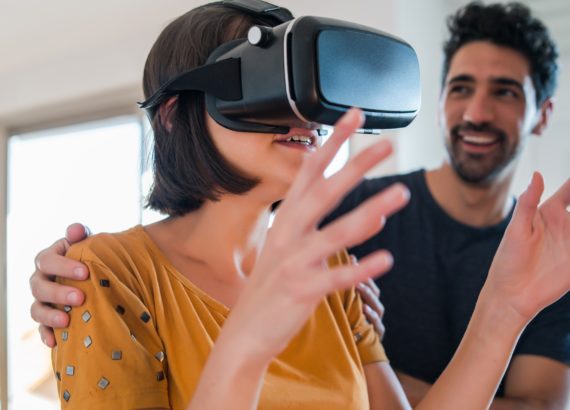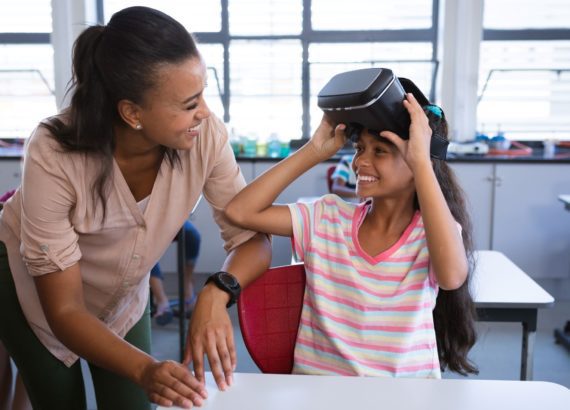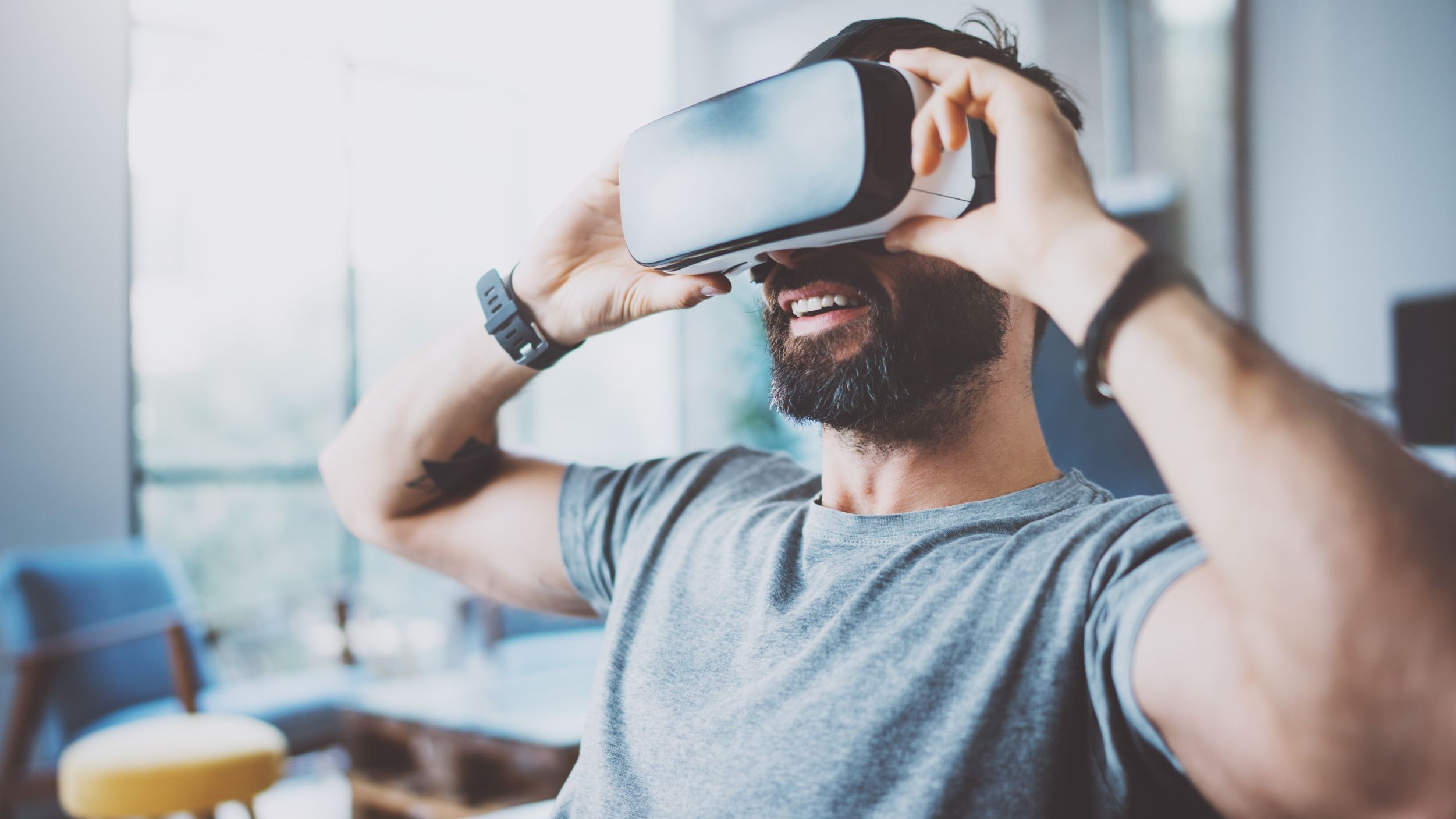Social media has changed how we connect with one another. Virtual reality takes that connection to a new level, creating a fully immersive experience. Strap on a VR headset, choose your game, and enter another dimension. Meet with users across the globe to share experiences that aren’t possible in the real world, like ship-to-ship space combat or zombie-infested death pits. Or simply hang out with friends and watch movies on giant virtual screens.
Virtual reality innovators have their sights set beyond gaming and streaming. They’re looking for ways to change how we work, teach, and learn through apps, chats, and major social media platforms like Facebook. Social media VR could be the catalyst.
What is social VR and how did it get started?
Social virtual reality allows you to simulate the experience of living as an avatar in computer-generated worlds. You can interact with others virtually and even create your own scenes.
Early efforts to bring social media VR mainstream include Sony PlayStation Home and the Facebook Spaces social VR app. While both platforms were short-lived, they represented a significant turning point in social media. They paved the way for spatial interactions, which give the user a sense of being present while interacting with friends, colleagues, and even their favorite marketing brands and products.

Social VR apps: tap into a new world
self-sufficient, software-loaded headsets are impressive but can cost upwards of $2,000.
If you want to jump into the social media VR game, there are affordable VR social apps you can purchase, download, and access via your own connected wearable. Here are some popular favorites:
VRChat
VRChat lets you play, hang out, create worlds, and chat using spatialized 3D audio. VRChat features expressive lip-synced avatars, multi-player VR games, and virtual space stations where you can watch YouTube videos with your friends.
Rec Room
Rec Room is a free social VR platform made up of thousands of player-created rooms. Each room features unique multi-player activities. You can play with friends or meet VR participants from around the globe. Rec Room supports various devices, including PSVR, Oculus Rift, and HTC Vive.
Bigscreen
Hanging out and watching movies barely scratches the surface when it comes to Bigscreen. This impressive platform has revolutionized how we work, play, meet up, and collaborate. With Bigscreen, you can enjoy virtual movie nights, PC games, and various multi-player activities. Connect over Oculus Rift, HTC Vive, and PSVR with up to a dozen friends.
Sports Bar VR
Sports Bar VR is what it sounds like, minus the watered-down cocktails. Whether your game is darts, pool, or air hockey, you and eight other users can compete in these classic bar staples. And its cross-platform capabilities let you connect with all your friends on HTC Vive, Oculus Rift, and Valve Index.
Facebook Horizon
Facebook is a flagship company for building VR headsets and promoting social virtual reality. So, it’s no surprise that they went back to the drawing board to create Facebook Horizon after the short-lived Facebook Spaces run. This user-generated virtual reality world is widely considered the first step toward creating an actual (a universe of interconnected virtual worlds). In Horizon’s reality sandbox universe, you can build your own environments and games, play and socialize with friends, or explore user-generated landscapes.

Social virtual reality and marketing
Marketers are now using social media VR to tout their brands and products. Virtual reality technology offers a new approach to connecting and engaging with consumers. Through social virtual reality, brands can reach their target audiences in powerful ways that text, images, or videos cannot.
The future is looking bright for social virtual reality
Nothing beats personal interaction with friends, family, and colleagues. But social media VR opens a world of possibilities for learning and teaching. Its far-reaching benefits include advancements in medical procedures, weather forecasting, and flight simulation. VR is even changing how we understand mental health.
For more information about how virtual reality is changing the way we look at our world, check out these articles:
Virtual reality for mental health
Extended reality: VR, AR, and MR








